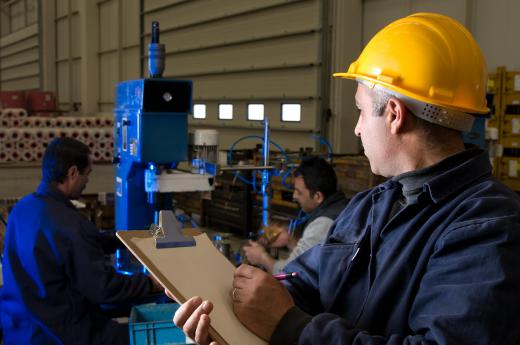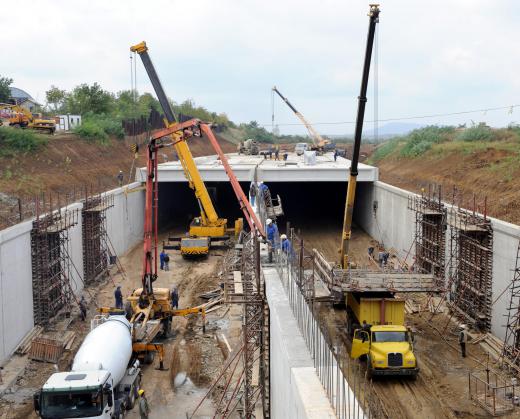What is Municipal Engineering?
Municipal engineering refers to the management of public structures and services that are provided by a local government. A city or town government oversees the construction and administration of public roads, sewers, waste management facilities, and parks. The focus of many public works projects is improving safety and convenience for citizens while protecting the environment and precious resources, such as the water supply. Successful municipal engineering involves the cooperation of builders, professional civil engineers, construction project managers and members of city planning committees.
City governments often consult experienced civil engineers to help organize and implement new municipal public works projects. Working with a planning committee, the engineer helps to identify defects or deficiencies with current structures. Perhaps a busy road or sidewalk is beginning to crumble, or a rainwater drainage system proves insufficient. The engineer carefully considers new options, and determines the most effective ways to improve or replace structures. The planning committee then presents the engineer's designs to construction project managers to work out the details of a plan.

Before a municipal engineering project can begin, the project manager figures out budgets and time frames. He or she assesses the quantity of materials and labor needed, and creates a thorough report that must be approved by the committee. Most project managers have specialized knowledge of the type of structure that needs to be built. Different professionals are usually in charge of the construction of waste management plants, city parks, power plants, bridges, and dams.

Site supervisors and laborers implement the construction phase of municipal engineering. They strive to finish jobs within deadlines set by project managers. During construction, site supervisors keep workers on task and inform planning committees of progress. Depending on the type of project, the labor force may include skilled electricians, cement masons, ironworkers, or road construction crews.

Environmental management is an important aspect of municipal engineering. When designing new public works projects, planning committees often receive input from environmental scientists to determine the impacts of building on undeveloped land. Scientists help to assess the environmental costs versus the overall benefits of a project, such as a new landfill. Professionals assess the potential risks of soil and air contamination, and provide expert consultation to committee members.
Municipal engineering efforts continue after structures and systems are put into place. Planning committees and engineers monitor the efficiency of recently completed projects, and city workers help to maintain them. Garbage collectors, groundskeepers, and utility workers ensure that public works programs run efficiently. Construction workers, city plumbers, and electrical technicians contribute to maintenance and repair efforts.
AS FEATURED ON:
AS FEATURED ON:













Discuss this Article
Post your comments